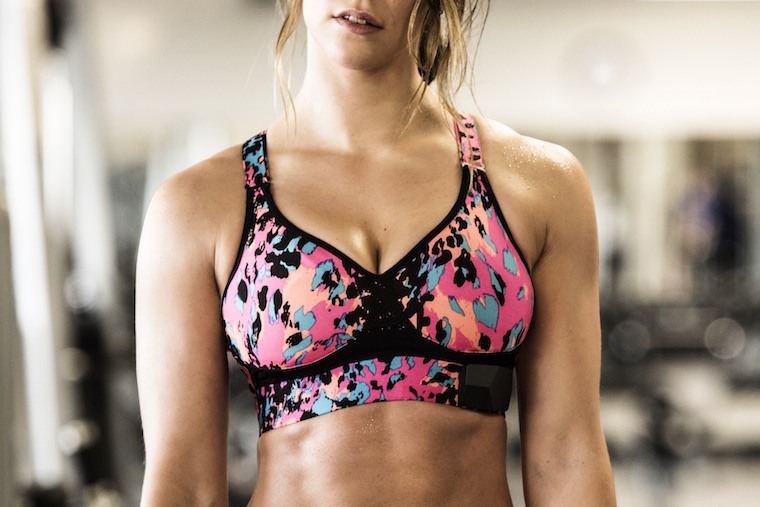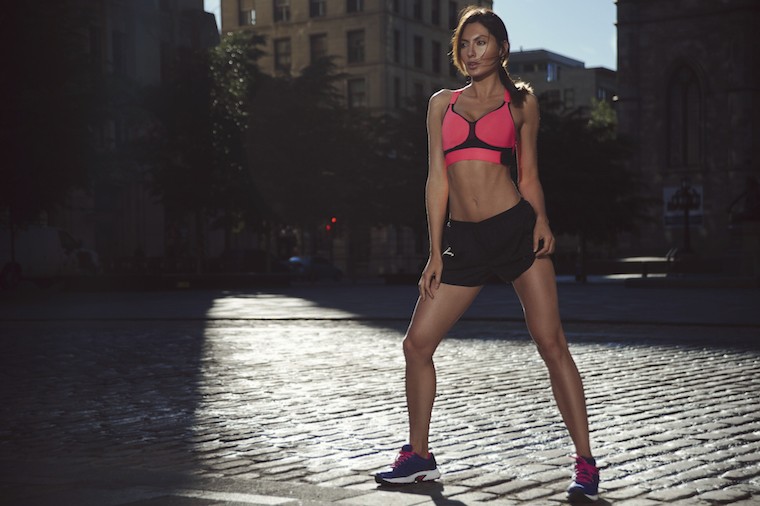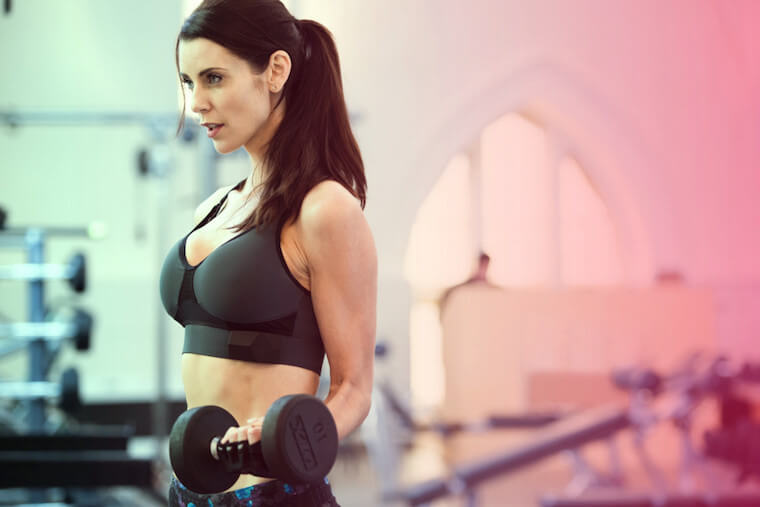I Tried a Smart Sports Bra to See If It Would Make Me a Better Runner—Here’s What Happened
Canadian tech company OMsignal released the smart sports bra last month, along with a companion app called OMrun—and the system is designed to accurately measure runners' specific data and then recommend tailored training plans based on those stats.
"We really researched the science of the female body and the science of the bra to design a spectacular physical product that marries beautifully with our digital experience," says co-founder and CEO Stephane Marceau. "We interpret data in a way that’s designed to be helpful to women runners specifically."
How does it work, and does it measure up to the hype? I strapped one on, laced up my sneakers, and gave the OMbra a (literal) test run—here's what happened.

How the OMbra works
When you order the Starter Kit ($169) you'll get both the bra and the OMbox, which is a little square that clips onto the front left side of the band beneath your boobs. The bra itself looks like your typical ultra-supportive hook-eye sporty option, and comes in four different colorways (from a staid black-gray combo to an eye-catching, tropical-hued print).
The actual sensors are embedded in the fabric of the band, where they'll collect data on your heart rate and breathing and send it to the box, which connects to your phone (and therefore the app) via Bluetooth.
The big differentiator is that after five runs, the system uses the data to calculate your ventilatory and anaerobic thresholds and then shows you "smart zones."
Once you're synced up, you start a run the way you would with any app, and audio commands can tell your mileage, pace, and cadence at regular intervals. When you end it, you'll get stats on your heart rate, breathing rhythm, pace, and more.

{{post.sponsorText}}
The big differentiator is that after five runs, the system uses the data to calculate your ventilatory and anaerobic thresholds and then shows you "smart zones," which guide your training based specifically on your personal fitness level.

Does it live up to the hype?
The heart rate and breathing measurements taken from the torso are generally more accurate than the wrist, so if you want quality stats, it's a great way to get them without the uncomfortable process of shoving a heart-rate strap under your bra.
Additionally, OMsignal's director of textile Aldjia Begriche says the bra was painstakingly designed to reduce impact effectively (AKA stop your boobs from flying everywhere without smushing them against your chest) via a strap-racerback combo. "We spent a lot of time analyzing where you move and where the impact can be dissipated throughout the OMbra," she says. My barely-there boobs were not able to put this claim to the test, unfortunately.
"In the beginning, you’re going to feel like it’s too slow, but you’re just going to keep getting faster."
I could, however, check out its tracking capabilities. Lots of systems offer metrics on running in "zones," but OMsignal actually calculates what they are based on your individual body, which is pretty damn cool. Its biometric coach then applies those personalized zones to show you how to run using the research-backed, athlete-chosen 80/20 system.
"Following that approach rather than following a time-and-pace approach is what results in the strongest runners with the most endurance and the fewest injuries," explains OMsignal community manager and experienced run coach Dave Mackey. "In the beginning, you’re going to feel like it’s too slow, but you’re just going to keep getting faster."

But there's room to, ahem, grow
Begriche lauded the back hook-and-eye clasp as a brilliant way for women to adjust the bra to get a perfect fit, but I absolutely could not fasten it on my own no matter how many times I tried, so I generally just let one of the hooks grab a random clasp and wore it haphazardly fastened (or asked my husband for help). The fit also felt a little restrictive for me—it would be better suited for someone with a large chest who needs support.
I like the fact that you can remove the box and toss the bra in the washing machine, but if you're a city girl who goes to the laundromat every three weeks like me, you're going to have to hand wash it over and over if you want to wear it every time you run. The other option? Buy a bunch of them—after the initial purchase, getting just the bra costs $69 (which is pricey, but not that much more than a Lululemon running bra, for example).
The fit also felt a little restrictive for me—it would be better suited for someone with a large chest who needs support.
There were also just a couple features in the app that bugged me: there's no music integration, and the dashboard that shows you your results (where you can analyze your data) is on a website you have to open in a browser, rather than stored in the app itself.
Overall, it's the first product of its kind—not to mention the fact that it's certainly the most intimate coach you'll ever run with.
Here are seven surprising ways to become a better runner, plus advice from five serious pros about upping your (pavement) game.
Loading More Posts...